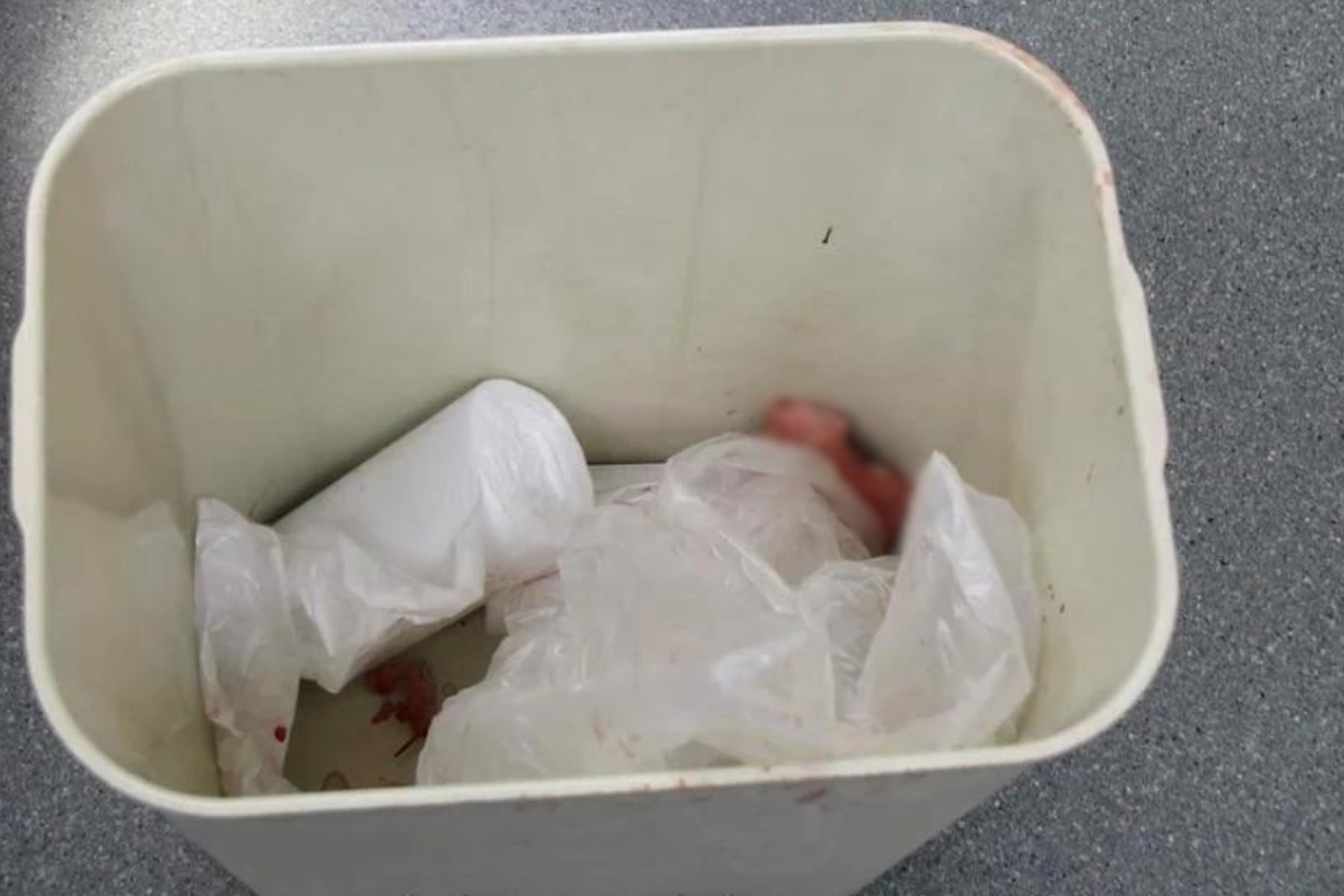In a quiet New Mexico town, a tragic incident unfolded, one that would ignite debates about privacy rights, medical procedures, and the complexities of the justice system.
It’s a case that has left many questioning the boundaries of the law and the depth of compassion we extend to those in the midst of life’s darkest moments.
The Startling Allegations
Nineteen-year-old Alexee Trevizo found herself in a courtroom, facing allegations that would change her life forever. Seated behind her lawyer, Gary Mitchell, she listened as her attorney discussed the details of her upcoming trial.
The charges were grave, the stakes incredibly high—Alexee Trevizo stood accused of murdering her newborn baby in a hospital bathroom. It’s a scenario that’s difficult to fathom, challenging our understanding of human nature and the circumstances that can lead to such unthinkable actions. And it’s a case that raises critical questions about the justice system’s ability to unravel the truth behind this harrowing event.
The Virtual Court Appearance
As the virtual court appearance unfolded, one could not help but wonder about the young woman at the center of this case. What led her to this moment, and what could drive someone, especially someone so young, to commit such a heinous act?
Sitting behind her lawyer, Alexee Trevizo remained composed, her emotions carefully concealed beneath a veneer of stoicism. Her attorney, Gary Mitchell, a seasoned legal professional, spoke on her behalf, making it clear that he would vigorously argue her innocence.
A Trial Date Is Set
During the proceedings, a critical decision was reached: the trial date. October 2 was the day when the legal battle would begin in earnest. With Judge Jane Gray overseeing the case, it was apparent that this would be a trial that captured the attention of the nation.
But what exactly had transpired on that fateful day in January, leading to such serious charges against a young woman who had, until that point, been living a relatively ordinary life?
The Hospital Bathroom Birth
The tragic incident occurred at Artesia General Hospital on January 27. Alexee Trevizo had arrived at the hospital, complaining of severe back pain. Her distress was genuine, and little did anyone know that this would be the beginning of a tragic sequence of events.
In the privacy of a hospital bathroom, Alexee Trevizo gave birth to a baby boy, an event that would forever alter the course of her life. It was a moment of sheer desperation, one that would eventually lead to accusations of murder.
Images of Alexee Trevizo’s Baby Boy in Hospital Bathroom




The Unthinkable Act
What followed is both shocking and deeply disturbing. After giving birth to her child, Alexee Trevizo allegedly took actions that would form the basis of the prosecution’s case. She is accused of strangling her newborn baby, a claim hinging on the presence of air in the baby’s lungs at the time of death.
The thought of such a young life being extinguished in such a tragic manner is difficult to bear. It’s a scenario that leaves us grappling with profound questions about the human capacity for violence and the emotional turmoil that may have driven Trevizo to take such a tragic step.
A Stark Difference in Narratives
In the face of these grave allegations, Alexee Trevizo has steadfastly maintained her innocence. She has offered an alternative narrative—one that challenges the prosecution’s theory. According to Trevizo, her baby was stillborn, and she placed the blame squarely on the hospital staff.
The Medication Theory
Trevizo’s defense attorney, Gary Mitchell, has put forward a startling theory—one that hinges on the hospital’s actions. He contends that medications administered by the hospital staff may have inadvertently led to the baby’s death.
In particular, he points to medications like morphine as potential culprits. While certainly unorthodox, this theory opens up a new dimension to the case. It forces us to consider the possibility that medical interventions, rather than criminal intent, may have been responsible for the tragic outcome.
Privacy Rights and Legal Challenges


During the recent court hearing, Mitchell raised concerns about privacy rights. He argued that video recordings of Trevizo in her hospital room and hallway violated her privacy. Additionally, he contended that police had questioned Trevizo in her hospital room without reading her Miranda rights.
These issues of privacy rights, legal procedure, and the boundaries of law enforcement actions are central to the case. They will likely play a significant role in the upcoming trial, as both the defense and prosecution seek to establish their respective narratives.
Public Scrutiny and Controversy
As news of the case spread, it ignited a firestorm of public opinion. Shocked and horrified by the allegations, many took to social media and other platforms to express their outrage. A petition emerged, titled “Get Alexee Trevizo off NMSU Campus!!,” which quickly garnered nearly 20,000 signatures.
The petition called for New Mexico State University (NMSU) to reconsider Trevizo’s admission. It alleged that anyone with disregard for human life should not be allowed to attend the university. The petition’s creator, Evelyn Grasiano, later removed her name from it, and NMSU clarified that no student or employee by that name was affiliated with the university.
A Legal Battle Beyond the Murder Trial
In addition to her murder trial, Alexee Trevizo and her legal team have embarked on another legal battle. They filed a wrongful death suit against the hospital and some of its staff.
This lawsuit alleges negligence and improper administration of medications as the primary causes of the baby’s death. It also accuses hospital staff of violating HIPAA laws by sharing medical information and allowing officers wearing body cameras into Trevizo’s exam room.
The Complexity of Medical Findings
Gary Mitchell has emphasized the significance of medical findings in Alexee Trevizo’s defense. A toxicology report indicated that the baby had 0.19 nanograms of morphine in his system at birth. The infant also tested positive for COVID-19, influenza A&B, and SARS.
Mitchell contends that these factors could have contributed to serious breathing issues in the baby. The presence of morphine in the baby’s system raises questions about the medications administered during Alexee Trevizo’s hospital stay. It introduces a new layer of complexity to the case, making it even more challenging to discern the truth behind this tragedy.
The Unbearable Grief
As we delve into this heart-wrenching case, we must also consider the immense grief and turmoil that Alexee Trevizo must be experiencing. Regardless of the outcome of the trial, a young woman’s life has been forever altered by this tragedy.
The questions that arise from this case are profound and difficult. What drove Alexee Trevizo to the bathroom that day? What led to her actions afterward? And how do we, as a society, reconcile the conflicting narratives and emotions surrounding this case?
Conclusion
The case of Alexee Trevizo is a somber reminder of the complexities and nuances involved in legal proceedings. As the trial date approaches, we can only hope that justice will be served, and the truth will emerge from the shadows of tragedy.
This is a case that challenges us to reflect on privacy rights, the boundaries of law enforcement, and the intricacies of medical findings. It serves as a stark reminder of the profound impact that a single event can have on the lives of those involved and on the broader community.
Regardless of the outcome, one thing remains certain—this case will leave an indelible mark on the legal landscape and in the hearts of those who follow it closely.





